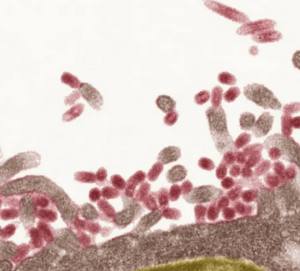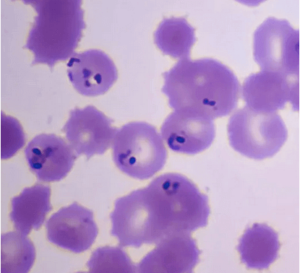What Are Germs
While good germs can help our bodies stay in balance and build our immune systems, bad germs can cause a breakdown in our bodies, leading to illness and infection.
Germs are everywhere. They live both inside and outside the human body, some living in your gut to help with healthy digestion while others exist on your skin – or transfer onto surfaces – and can pass around infection diseases. Good or bad, there are four main types of germs:1
Types of Germs
Bacteria:
 |
While most bacteria can be good for us, ‘bad bacteria’ can cause infections such as sore throats, ear infections and pneumonia. |
Viruses:
 |
These can cause a variety of outbreaks from flu to measles and chicken pox. |
Fungi:
 |
These spread through water and can cause intestinal infections that cause diarrhea and nausea. |
Protozea:
 |
While most bacteria can be good for us, ‘bad bacteria’ can cause infections such as sore throats, ear infections and pneumonia. |
What do germs look like?
You may be wondering “What do these germs look like?”. But, if you were thinking of trying to spot one, don’t forget that we can’t see them with the human eye. In fact, they are so miniscule that we’re unable to see them without a microscope! This is the reason that we often don’t know that we’ve come into contact with germs that make us sick until we actually are sick.
Where do germs come from?
It’s almost impossible to avoid germs because they’re all around us. You can find germs – or microbes as they’re sometimes known – in the air, on food, on plants and animals as well as in soil and water.2 In fact, they’re present on pretty much all surfaces (including on and inside our own bodies!).
How do germs spread?
Germs can spread in various ways, but mostly through direct or indirect contact – or by simply being in the air.3
Through the air
This can include anything from sneezes to coughs or even just talking and breathing.
Directly
Germs can spread through direct contact with something contaminated (such as holding someone’s hand). They can also spread directly through sweat, saliva and blood.
Indirectly
Germs can spread indirectly, typically because of touching something that someone else has touched, like a surface or object.4
How long do germs live?
How long germs live depends on a variety of factors; from the type of germ to the nature of its environment, such as temperature, humidity and surface.5 All of these things make it extremely difficult to estimate how long it takes for germs to die but many germs of concern can survive on surfaces for hours to days.
Where can germs be found?
As germs are invisible to the naked eye, it helps to know the most common places that they could be lurking. Here are some of the spaces that germs tend to hide, as well as what kills germs and how to avoid them.
Public places
Your office: Shared office supplies are germ magnets. Disinfect your workspace by coating the area with Dettol® Disinfectant Wipes and don’t wipe it off. Simply let the substance dry for maximum effect.
Airplanes: Germs can spread easily on a flight, particularly because you’re in a closed space with strangers. We recommend disinfecting your seat with a Dettol® Disinfecting Wipes when you board, including the arms, tray, window and video monitor.
Movie theatres: Similar to airplanes, these are another place that germs thrive. Be sure to wash your hands thoroughly whenever you get a chance. If you’ll be eating snacks throughout, try to avoid touching your eyes, nose and mouth.
Restaurants: Improperly washed – or unwashed – hands can cover food in germs. Not to mention raw or undercooked foods can expose an entire kitchen to germs such as salmonella and shigella. Always choose your restaurants wisely, and don’t forget to check their health certificate.
The doctor’s office: You are sharing a small space with infectious people, after all, so chairs, doorknobs, toys and the like can become contaminated. Try to avoid touching shared surfaces, wash your hands every chance you get and, if you’re taking your child, consider bringing their own toys and books from home instead.



